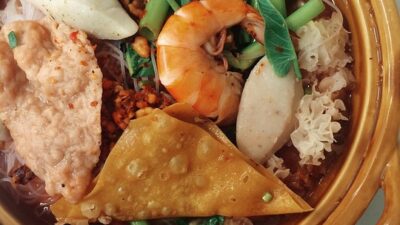Italian cuisine is celebrated worldwide, revered not only for its rich flavors and diverse ingredients but also for its deep-rooted traditions that span centuries. From the rustic dishes of ancient Rome to the sophisticated recipes gracing modern fine dining, Italian food reveals a tapestry of history, culture, and regional identity. This article explores the evolution of Italian food traditions, unveiling how they have transformed while preserving their essence.
Ancient Influences
The journey of Italian cuisine begins in ancient times. The Etruscans, R Romans, and Greeks laid the foundations of the culinary practices in the region. Staples such as grains, legumes, and olives were central to their diets, while animals like goats, pigs, and chickens provided protein. Ancient Roman banquet culture, characterized by extravagant feasts, introduced a variety of techniques, including roasting and baking. The use of herbs and spices, often imported via trade routes, enriched flavors long before tomatoes, a cornerstone of modern Italian cuisine, were introduced.
The Arrival of the Tomato and its Impact
The arrival of the tomato in Europe in the 16th century marked a pivotal moment in Italian cooking. Initially met with skepticism, the tomato gradually gained acceptance, particularly in southern Italy. By the 18th century, it had become an integral part of sauces, pizzas, and other beloved dishes, heralding the birth of iconic staples like spaghetti with tomato sauce and Neapolitan pizza. The fruit’s vibrant color and flavor transformed the culinary landscape, leading to a new era of Italian gastronomy.
Regional Diversity
One of the hallmarks of Italian cuisine is its regional diversity. Each region boasts distinct ingredients, traditional dishes, and cooking methods influenced by geography, climate, and historical context. Northern Italy, characterized by its mountainous terrain, favors creamy risottos, rich polentas, and savory cheeses. In contrast, the sun-kissed south offers a bounty of fresh vegetables, seafood, and robust tomato-based sauces.
The impact of regional traditions is evident in the variation of pasta styles—ranging from the egg-rich tagliatelle in Bologna to the durum wheat semolina used in the south. Celebrations and local festivities often feature specific dishes, emphasizing the connection between food and cultural identity.
Culinary Practices: From Rustic to Refined
Historically, Italian food was largely peasant fare, characterized by simple, local ingredients prepared with minimal fuss. The agrarian nature of Italian life fostered reliance on seasonal produce, leading to dishes that highlighted freshness and simplicity. However, as society evolved, so too did its culinary practices.
The Renaissance era saw an influx of ideas and ingredients from across Europe. This period introduced the concepts of refinement and artistry in cooking, as seen in the luxurious banquets of wealthy patrons. The establishment of trattorias and osterias in urban settings allowed for a democratization of dining, enabling a broader audience to experience fine cuisine in a more casual setting.
The Globalization of Italian Cuisine
The Italian diaspora in the 19th and 20th centuries played a crucial role in the globalization of Italian food traditions. As Italians emigrated around the world, they carried their culinary customs with them. Pizza, pasta, and risotto began to appear in cities from New York to Buenos Aires, often assimilating local flavors and ingredients.
Italian-American cuisine, known for its hearty portions and inventive interpretations, emerged—a fusion that sometimes strayed from traditional recipes but remained deeply loved. Today, dishes like fettuccine Alfredo, which have little connection to Italy’s culinary roots, are staples in many households.
The Modern Italian Renaissance
In recent decades, a renewed interest in authentic Italian cuisine has burgeoned, prompting a revival of traditional methods and local ingredients. Chefs are increasingly committed to “slow food” principles, emphasizing sustainability, seasonal produce, and artisanal techniques. Food festivals and local markets celebrate regional flavors, while traditional dishes are reinterpreted in contemporary dining experiences.
Moreover, Italy boasts a rich wine heritage, with vast vineyards producing some of the world’s finest wines, integral to its culinary narrative. The resurgence of wine pairing and appreciation adds depth to the dining experience, reinforcing the connection between food and culture.
Conclusion
The evolution of Italian food traditions tells not just the story of a cuisine but also of a people. It reflects the layers of history, regional diversity, and a deep appreciation for ingredients that have shaped the Italian way of life. As culinary practices continue to evolve, the essence of Italian cuisine—rooted in simplicity, quality, and community—remains steadfast, inviting everyone to take a bite of history. Whether savoring a classic ragù or a modern twist on tiramisu, we partake in a timeless tradition that transcends borders and generations.



